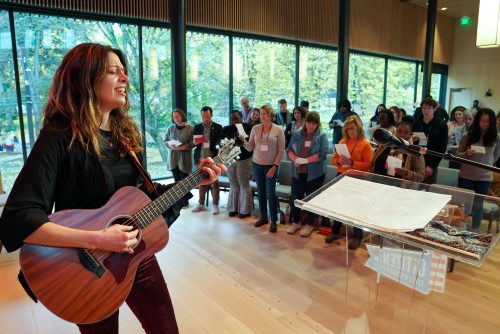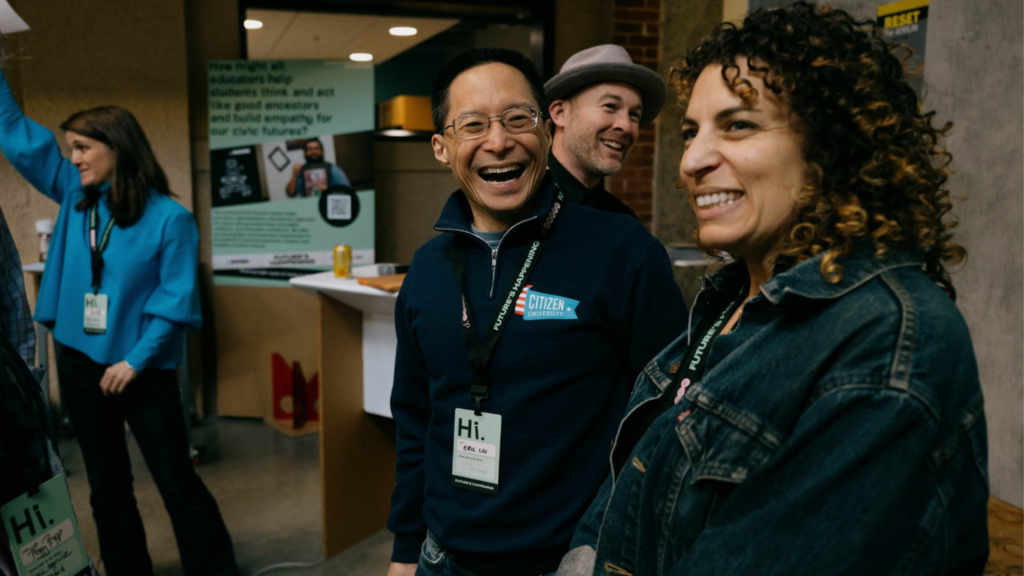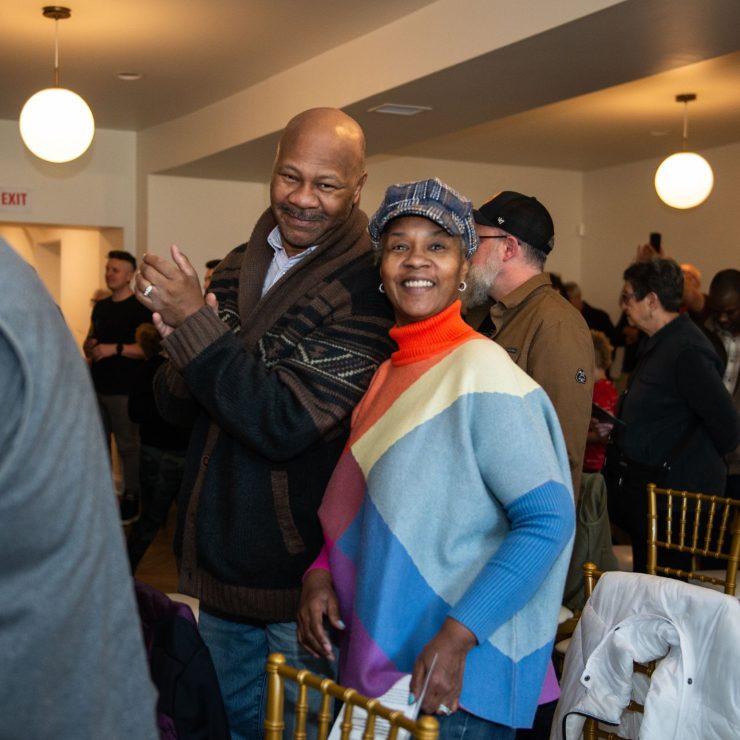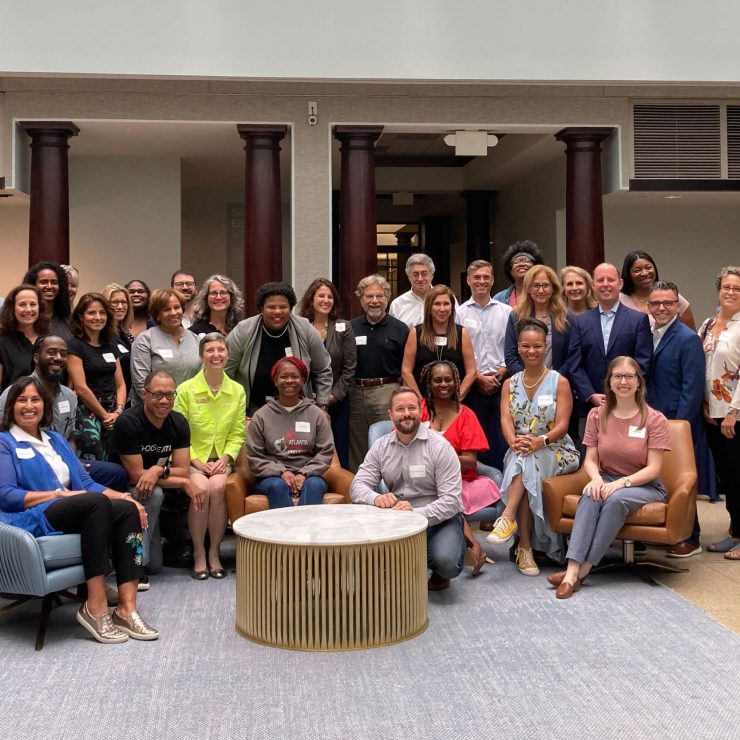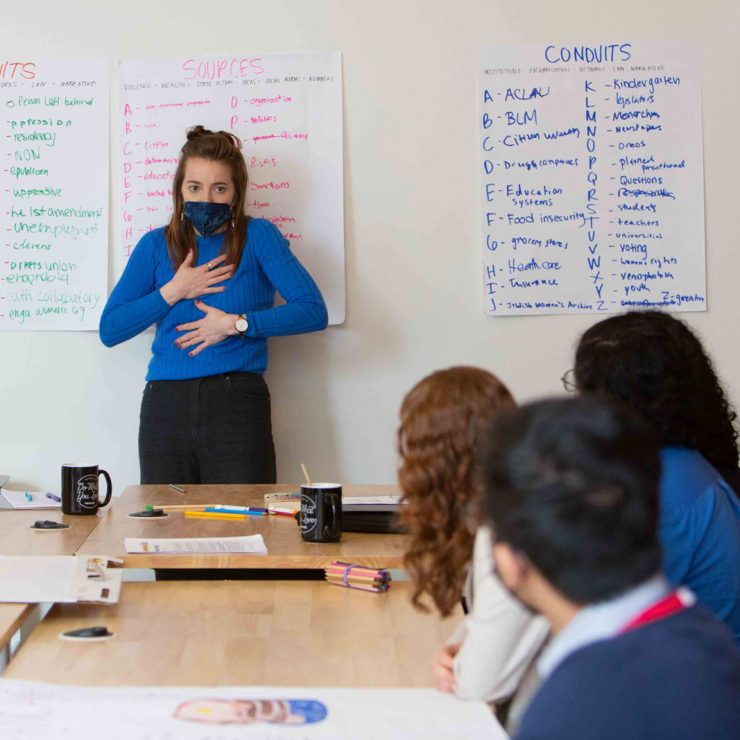With time until the next presidential election, Americans have a long runway to improve our national culture around politics and elections. It gives us time to build healthier civic habits and ways of treating one another. It gives us time to practice building trust and relationships, and the muscles for respectful, productive debate. It gives us time to approach local elections with more shared purpose and bridge-building.
It gives us time to strengthen our civic culture. But what will we do with this time?
Civic culture consists of the norms, habits, and narratives that shape how we treat one another as Americans, and whether we show up to help solve common problems. You might be familiar with the parts of our culture that are weak and unhealthy: a tendency toward despair and apathy, individualism over collaboration, hoarding of power, and narratives that reinforce division, competition, and zero-sum thinking.
Read how Americans are contributing to a more vibrant, resilient civic culture that is strengthening our social fabric and catalyzing more care for community, responsibility-taking and acts of citizenship…
1. Practice Mutualism and Mutual Aid
Silos? Resource scarcity? Competition? No, not here. Atlanta is choosing a different path: mutual aid, trust, and friendship.
Once a quarter, these civic and community leaders gather with the purpose of offering each other help. A few members present a project they’re working on, and the rest raise their hands to offer time, connections, and even funding. It’s called a civic collaboratory.
“The ATL Civic Collaboratory gave me the biggest single push in one day,” says member Blake Stoner.
Citizen University developed this mutual aid model to support networks like this one in Atlanta. A civic collaboratory is a trust-builder and project-catalyzer because it is cross-sector. Comedians connect with CEOs. Academics lend a hand to journalism orgs. It strengthens the fabric of local partnerships which allow members to respond more effectively to community needs.
But importantly, the ATL Civic Collab is a culture-changer. They’re choosing to build habits of connection and generosity, in a time of immense divide. They’re making it a norm to nurture trust, cross-partisan friendship, and joy, in a time of polarization. They’re building a stronger civic culture, all through a mutuality that pays off.
Learn how to practice mutualism and mutual aid →
💡 Try this: Promote mutual aid in your community with an emphasis on building solidarity rather than charity.

2. Promote Habits of Service
Picture this: civic matchmaking. The room is full of neighbors and community organizations, and there’s a tangible energy of connection in the air as people bounce from table to table.
Kate Tucker set up this day of civic matchmaking because she noticed a disconnect between supply and demand in her hometown of Akron, Ohio: on one hand, community members were looking for ways to get involved, and on the other, organizations needed volunteers and support. But there weren’t opportunities for the two sides to meet. So as part of her Civic Saturday gatherings, Kate hosted civic matchmaking to close this gap.
Kate is volunteering her own energy into actively shaping the culture in Akron. She’s making it a habit for the community to connect on Saturdays, and new norms of serving others are blooming.
This culture of service can have a snowball effect: as more people give their time to helping others, acts of service become the norm, encouraging more people to do the same. It fosters a mindset that it is possible to engage across difference and indeed fruitful to do so.
And while service is unselfish, it also comes around to benefit each of us, starting with feeling part of something bigger. “I didn’t just meet my neighbors,” said one Akron volunteer. “I connected with them. I got their numbers. We made plans.”
Learn how to promote habits of service →
💡 Try this: Make sure anyone with an instinct to serve does not face obstacles to do so. Identify underused places, resources, and people within a community that can plug gaps where there is a need.
